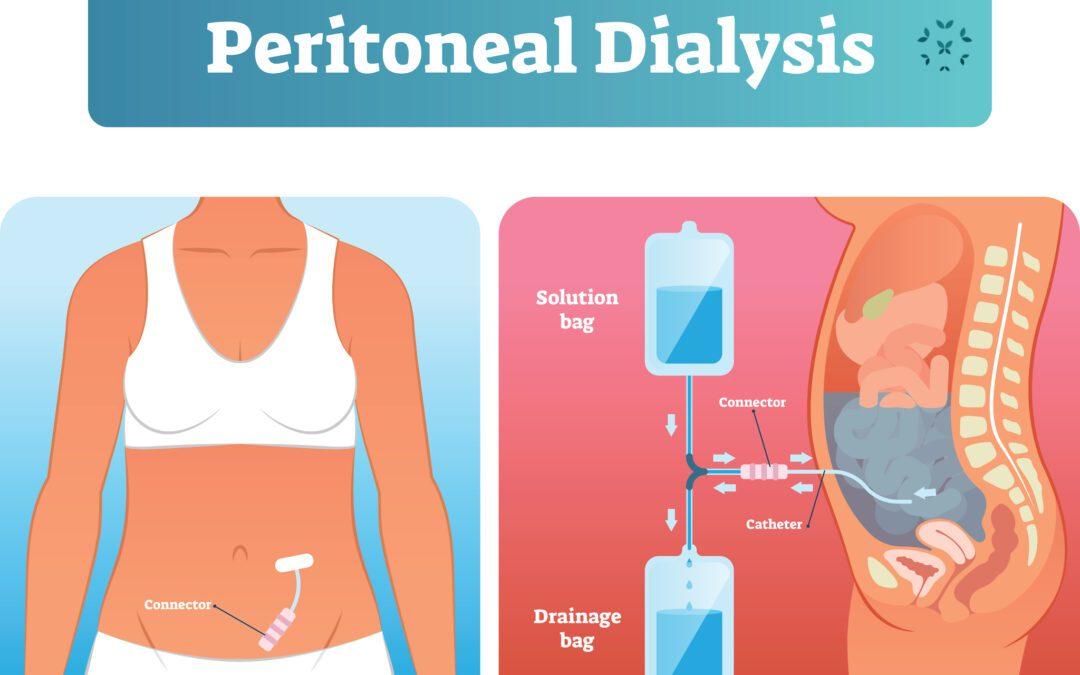Peritoneal dialysis provides those living with advanced kidney disease with an invaluable treatment option. By filtering waste products out of your blood through your abdomen (peritoneum), this treatment effectively filters toxins out while also supporting optimal nutrition – here at Dr. Bismah Irfan’s site we understand your unique nutritional requirements to provide this guide “Eating Well on Peritoneal Dialysis” that will assist with planning out your diet so that you feel your best and experience optimal health!
Protein Power: Building Blocks for Health on PD
@kidneyhealthmd Types of Dialysis and their difference. #KidneyHealth #MaximizeKidneyHealth #Inflammation #ChronicKidneyDisease #FunctionalMedicine #HealthyDiet ♬ original sound – Kidney and Holistic MD
In contrast with hemodialysis, which filters blood outside the body, peritoneal dialysis uses your abdomen’s lining (peritoneum) as the filter for waste products to remove them. While effective, this process also leads to some loss of proteins during exchanges; as a result, individuals on PD often require increased protein intake compared to general population individuals to compensate for this loss of protein during exchanges.
Protein is essential in life and plays an integral part in muscle building and repair, immune function, and enzyme production. Not getting enough can result in muscle atrophy, weakness, and an increase in susceptibility to infections.
High-Quality Protein Sources to Fuel Your Body Properly
When it comes to proper body fueling, protein quality counts. Selecting high-quality sources that offer essential amino acids your body cannot produce on its own is vital – great choices include these.
- Lean meats include skinless chicken breast, turkey breast, and lean cuts of beef or pork, with skin removed.
- Poultry (chicken, turkey, and duck without skin)
- Seafood varieties including salmon tuna cod as well as other species
- Eggs are an ideal complete protein source rich in essential vitamins.
Reaching Your Protein Goals: What Amount Is Enough?
Your specific protein requirements should be assessed by a registered dietitian based on factors like your body weight and overall health status; as a general guideline, aim for approximately 1.2-1.3 grams per kilogram of body weight each day as your goal.
Portions control is of utmost importance and starting right is easy with a 3-ounce serving of cooked chicken breast or fish as your protein source for each day’s meals and snacks.
Read more: Can dialysis be temporary?
Taming Phosphorus: Keeping Your Bones Strong on PD
Phosphorus, an essential mineral found naturally in many foods, becomes even more essential when living with PD. Unchecked levels can wreak havoc on bones when excess phosphorus enters your bloodstream circulating as excessive levels leech calcium out, leaving fragile structures susceptible to fracture and painful complications – an effect known as bone disease that increases your risk for fracture.
Maintaining a healthy equilibrium is imperative and this includes restricting phosphorus intake. Here are some high-phosphorus sources you should pay attention to:
- Processed Foods: Due to hidden phosphorus additives found in processed meats and convenience meals, such as processed meats and deli meats, should only be consumed occasionally and on an as-needed basis.
- Certain dairy products: While dairy offers essential calcium, it also supplies significant sources of phosphorus. Cheese, yogurt, and milk should all be enjoyed moderately but please consult with a physician or dietitian on an effective approach for portion control.
- Nuts and Seeds: Although nutritious in many ways, nuts and seeds naturally contain high concentrations of phosphorus; therefore it’s wise to enjoy them only occasionally and apply portion control strategies when making choices about serving sizes.
- Colas and dark sodas: Beverages that contain phosphoric acid may provide significant sources of dietary phosphorus; to achieve better health choose water or unsweetened beverages in its place.
Potassium Regulation for Maintaining Electrolyte Balance
Potassium is another crucial electrolyte that should be carefully managed on a PD plan since excess potassium levels can contribute to muscle cramps and heart rhythm disorders. While numerous fruits and vegetables offer plenty of potassium – bananas, oranges, and potatoes in particular have plenty of it! If these foods are part of your daily diet then be sure to discuss portion control measures along with alternate cooking methods like boiling or soaking that may lower potassium intake further.
Finding Fluid Balance: Staying Hydrated Within Limits
Adherence to fluid restriction guidelines is vital when treating PD. Your physician will establish one based on individual needs; though keeping within this limit may prove challenging at first, keeping hydrated remains crucial – fruits, vegetables, and soup can all contribute towards daily fluid consumption which should keep you within your limit.
Making It Manageable: Tips for a Healthier PD Diet
Eating well on PD doesn’t need to be complicated! Here are a few helpful tips:
- Understand Food Labels Properly: Food labels provide your primary resource for understanding nutrient content – paying close attention to levels of proteins, phosphorus, potassium, and sodium content is key!
- Plan Your Meals and Snacks: Planning meals and snacks can ensure you’re receiving adequate nourishment throughout the day.
- Spice Up Your Lifestyle: Forgoing a salt shaker isn’t necessary! Herbs and spices add variety without adding additional sodium intake into meals!
- Partner With A Registered Dietitian: Partner with a registered dietitian today at Dr. Bismah Irfan‘s website to create a custom meal plan tailored specifically to you! Schedule an appointment.
Vegetarian and Vegan Diet Considerations
Plant-based diets can be highly satisfying for vegetarians and vegans. Protein sources including lentils, beans, tofu, and tempeh provide ample amounts of essential nutrition – protein being no exception! However, registered dietitians must help make sure you receive all essential vitamins including the required levels.
Read more: How long can you live on dialysis?
Sample Meal Plan for Implementing it Into Practice
Here is an example daily meal plan incorporating all of these principles:
- For breakfast: Scrambled eggs with spinach and whole-wheat toast for protein and vitamins.
- At lunch: Grilled chicken salad topped off with light vinaigrette dressing providing protein, vitamins, and minerals.
- Dinner: Salmon with roasted vegetables and brown rice (protein, fiber, and vitamins).
- For snacks: Try apple slices topped with almond butter (protein and fiber); Greek yogurt mixed with fruit for protein and calcium consumption is another tasty choice.
Working Together for Optimized Health
Eating well during peritoneal Dialysis is integral to overall wellness, so understanding your nutrient requirements and applying these tips to your daily routine will allow you to thrive during PD.
Our team at Dr. Bismah Irfan’s website is here for support – arrange an appointment with one of their registered dietitians today so we can assess individual requirements and tailor an individualized plan of success that’s right for you – We look forward to partnering together!


